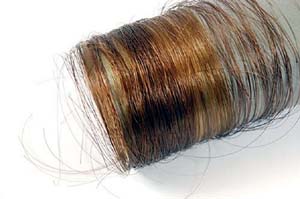Lignin Being Used to Create Low-Cost, Functional Carbon Fibers
![]() Print this Article | Send to Colleague
Print this Article | Send to Colleague
 According to a report this past week by Composites World, Cincinnati, Ohio, USA, although there are only a handful of lignin suppliers capable of producing high-purity fiber today, interest in lignin fiber appears to be increasing, and several pulp and paper companies are pursuing lignin fiber development.
According to a report this past week by Composites World, Cincinnati, Ohio, USA, although there are only a handful of lignin suppliers capable of producing high-purity fiber today, interest in lignin fiber appears to be increasing, and several pulp and paper companies are pursuing lignin fiber development. Swedish forest products R&D company Innventia (Stockholm, Sweden), for one, is producing high-quality lignin carbon fibers at lab scale and demonstrating their utility in several projects. Innventia, together with Chalmers University of Technology (Gothenburg, Sweden), is known for its patented LignoBoost process, which obtains high-volume softwood lignin from black liquor, says Per Tomani, Innventia’s focus area manager of lignin and carbon fibers: "We developed a better way to extract softwood lignin, and that know-how was sold to Valmet and is now being commercialized." Valmet (Keilasatama, Finland) has since built two lignin plants, one in Finland and a second in Plymouth, NC, USA. The latter, operated by Domtar (Montreal, QC, Canada), has a projected production rate of 25,000 metric tpy and has expanded the availability of high-quality lignin.
Photo: These hair-like lignin-based fibers were produced at a laboratory scale at Iowa State University (Ames, Iowa) under a research project to produce low-cost carbon fiber for wind turbine fabrication
Using that softwood lignin source, Tomani’s group has focused on understanding the chemistry, developing best practices for melt-spinning and fiber carbonization, and actually tailoring lignin for better fiber production. "It’s quite a different molecule, and it’s important to understand the chemistry and the processing to produce a good carbon fiber," said Tomani.
Although Tomani won’t reveal his group’s carbon fiber properties, he says it has fiber diameters of 10-15 microns. Partner Swerea SiComp (Kista, Sweden), Sweden’s national research organization with polymer composites expertise, has woven the fibers and developed a balsa-cored structural composite panel with lignin-based carbon fiber-reinforced facesheets. Intended for lightweighting in automotive and other high-volume applications, the panel will join another demonstrator — a radio-frequency toy car (including the toy’s batteries) made with lignin-based carbon fiber — to generate interest in a full-scale lignin-fed carbon fiber line in Sweden. Says Tomani, "We hope that both industry and society will be bold enough to invest in this scale-up, for more sustainable products."
Stora Enso (Helsinki, Finland) has investigated carbon fiber manufacture using its lignin sources. Niklas Garoff, senior development engineer at the company, reports that, unlike with PAN, desirable linearly oriented graphite domains are not formed during lignin stretching and carbonization. To rectify that, the company is researching a hybrid chemistry that combines cellulose, also derived from its pulp and paper activities, with lignin, in an air-gap spinning process, using an N-methylmorpholine N-oxide solution. A demonstration project has been carried out with polymer specialist Fraunhofer IAP (Pottsdam, Germany). Stora Enso believes the successful demonstration of the novel technology has high-value potential for carbon fibers.
In North America, significant research is being carried out in Canada, under the Biomaterials and Chemicals Research Network. Dubbed Lignoworks, it is one of four research networks created in 2010 as part of the Natural Sciences and Engineering Research Council of Canada’s (NSERC) Forest Sector R&D Initiative. Lignoworks participants include all of Canada’s major universities, together with industrial partners Weyerhaeuser, FPInnovations (Pointe-Claire, QC, Canada) and Alberta Pacific Forest Industries Inc. (Boyle, AB, Canada). Canada’s first commercial lignin plant, in Hinton, AB, was developed to use the LignoForce technology developed by FPInnovations to produce high-quality lignin from black liquor generated by West Fraser Timber Co.’s adjacent paper mill. Professor Frank Ko of the University of British Columbia is heading the polymeric products research efforts to convert the lignin source into carbon fiber for automotive and bio-composite applications.
More information is available in the full article available online.


